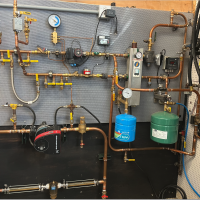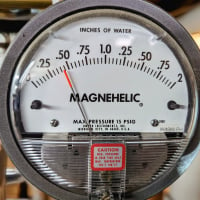Best Of
Re: Is the circulator pump too powerful?
So … any Photos "Coming Soon to a Theater Near You" @gardenman?
Re: Restoring One Pipe -- finally
Yes, Velva ND. and you were here. You recognize the wash machine. it is still there. 3 phase, 3 hp belt drive, overhead shaft.
Re: Best Material to Use for Drainpipes in Residential Homes.
Was that in Montana?
(couldn't resist 😎 )
Re: ASME requirements
I think most all boilers are ASME rated.
Where you run into issue is with boilers with a relief valve rated over 30psi and then the installer uses non ASME expansion tanks to save money.
I have gotten around this by installing a 30psi relief valve on the boiler and removing the 50 psi valve it came with as long as you don't need the higher pressure.
But you have to watch the boiler tapping size. Valves rated for the same BTU but for a higher pressure may have a smaller pipe size
I copied below something I found on the RAYPAK website
""Under ASME section IV part HLW rules, an ASME-compliant tank is required when the total system volume exceeds 120 gallons, or when the total heating capacity exceeds 200,000 BTUH.""
Re: Boiler
The quality of the installation and who you choose to do the job determines if a boiler is good or bad. A basic builder grade cast iron boiler sized properly and Installed perfectly will outperform an oversized three pass boiler that's installed poorly.
My favorite boilers are from Energy Kinetics. I recommend getting some quotes from an Energy Kinetics dealer. Very efficient and reliable boiler. My second choice would be a three pass boiler, Utica Tri Fire, Pure Pro Trio, Burnham MPO or Buderus.
Re: Best Material to Use for Drainpipes in Residential Homes.
good point, and reaming is in the codebook
I use a chop saw now for copper and pvc/abs. An 80 tooth non ferrous blade works great for both materials
 hot_rod
hot_rod
Re: Boiler
Burnham's are leakers so they want to plaster as many different names on the stuff as they can to avoid there bad reputation.
It's easy to see the way this going.
As the dreaded HPs take over the world the CI boiler market dwindles and some MFGs go out of business and are taken over by others.
Pretty soon it will be down to Weil McLain and Burnham & the Utica Clan. I thought Peerless would hang on but maybe not.
Slant Finn is gone, Smith is gone
Re: Is the circulator pump too powerful?
without proper check protection you can also get reverse flow through an un-powered circulator
 hot_rod
hot_rod
Re: Best Material to Use for Drainpipes in Residential Homes.
Far far far less likely in plastic piping than cast iron. I have zero doubt about that.
My question is how long until cast iron develops that rusty rough surface that likes to catch stuff?
 ChrisJ
ChrisJ

